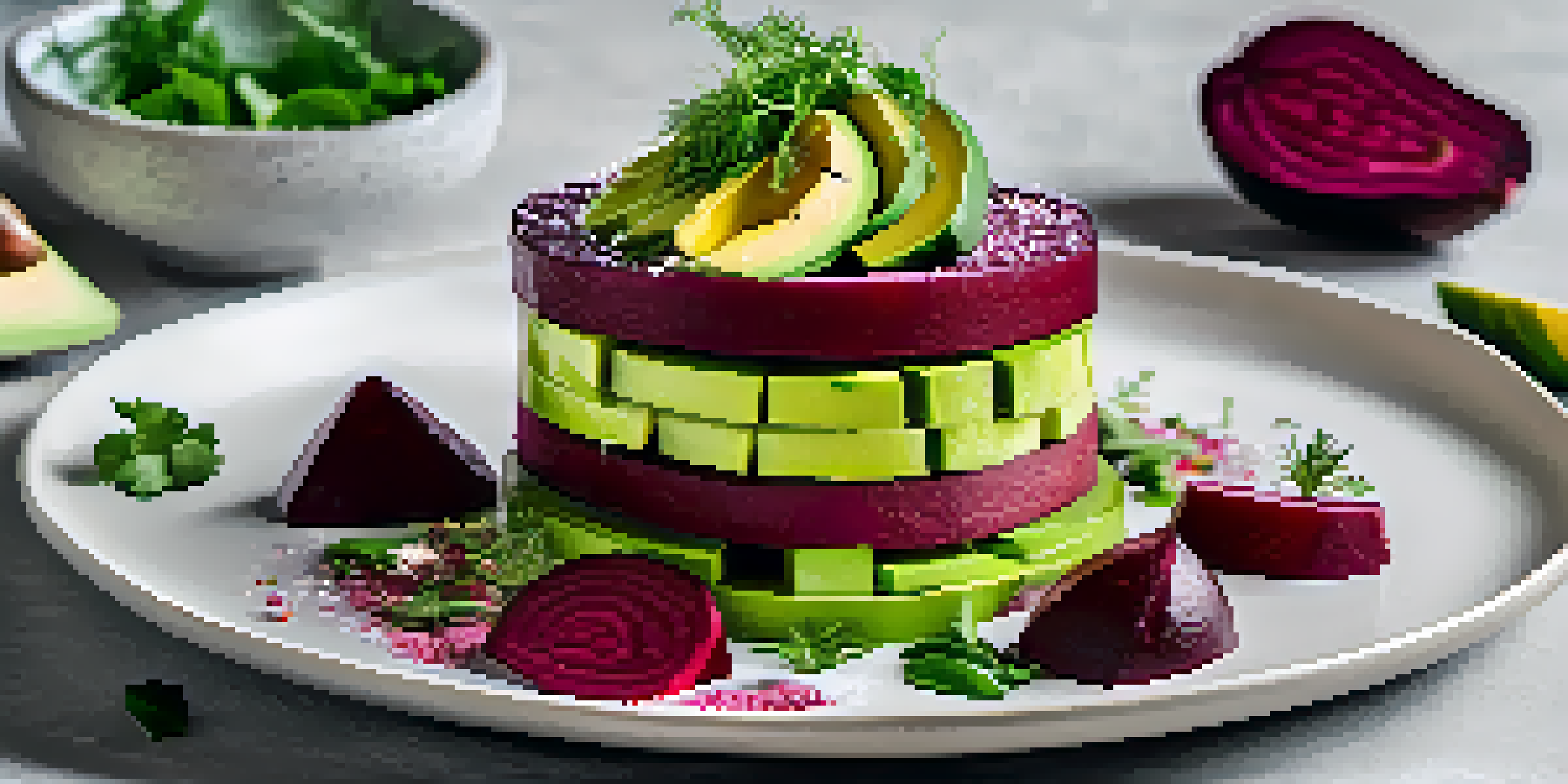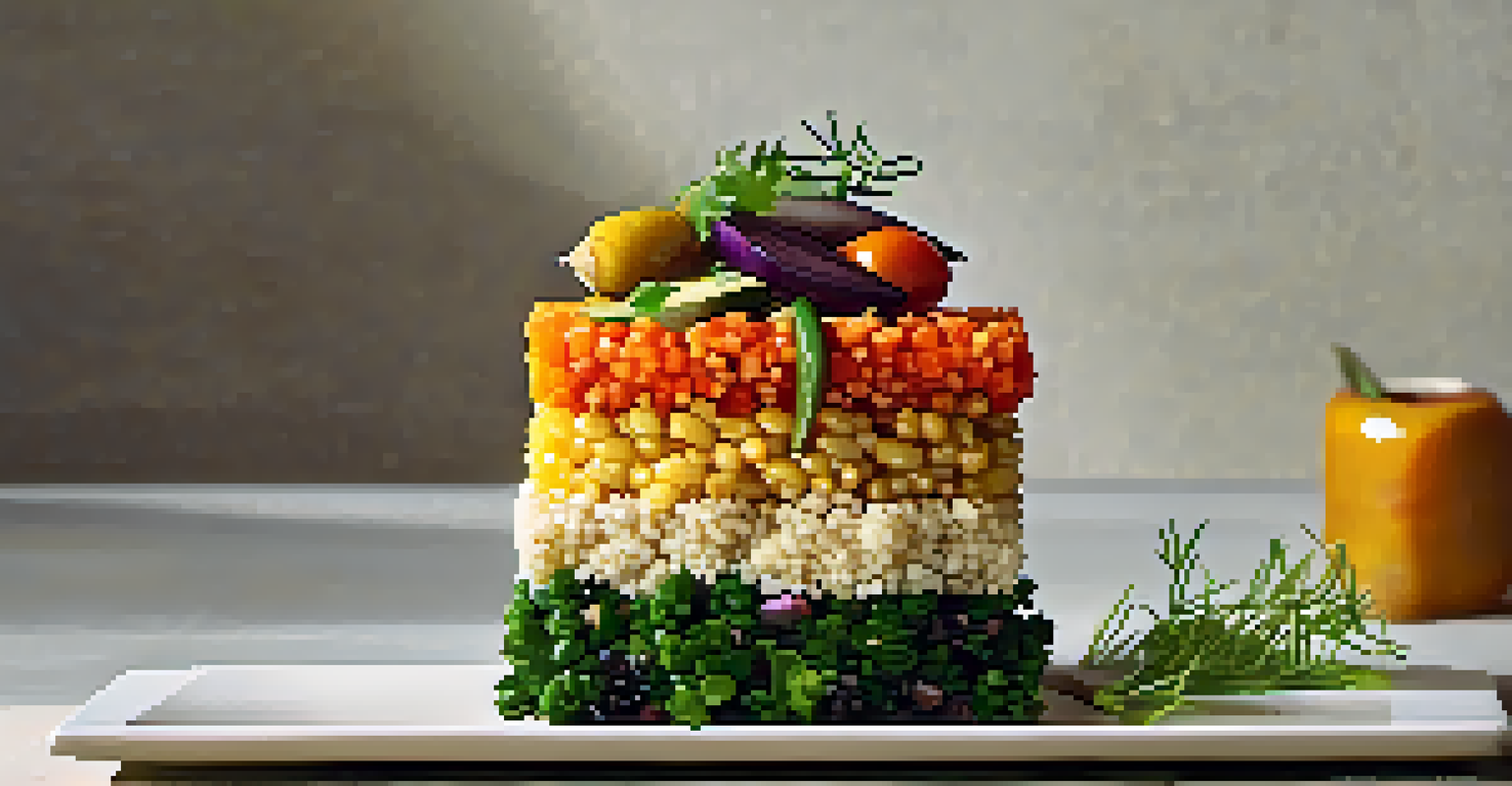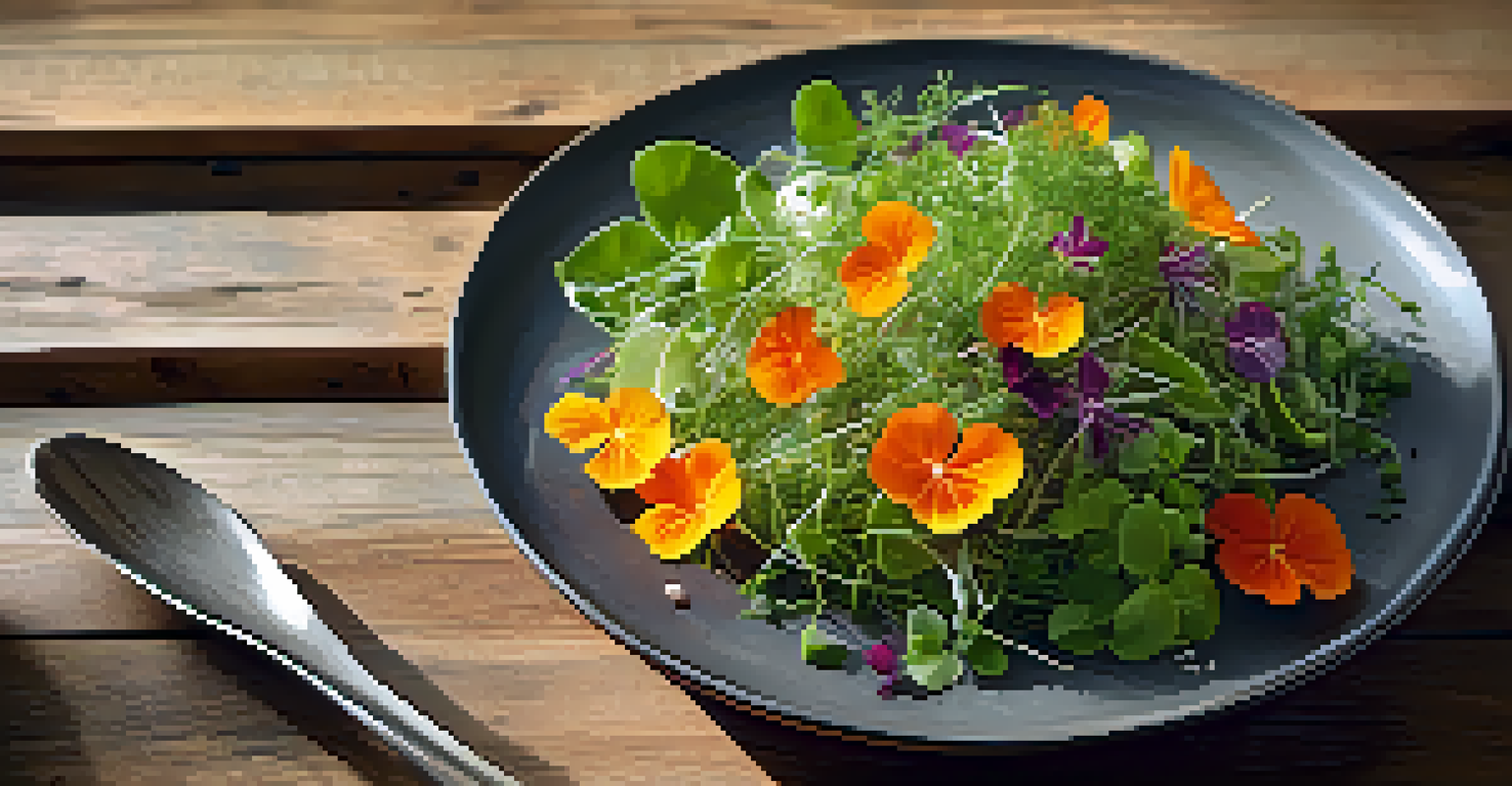Creative Plating Ideas for Eye-Catching Vegetarian Dishes

Why Plating Matters: The Art of Presentation
Plating is more than just putting food on a plate; it's an art that can elevate your dining experience. When you present a dish beautifully, it engages the senses and stimulates appetite before the first bite. Think of it as the visual introduction to a delicious story.
You eat with your eyes first.
A well-plated dish can transform ordinary ingredients into an extraordinary culinary experience. For vegetarians, this takes on special significance, as colors and textures can shine through in vibrant ways. By focusing on aesthetics, you can highlight the freshness and nutrition of plant-based foods.
Moreover, beautifully plated dishes can impress guests and create memorable moments. Just like a well-written book, a well-presented meal invites curiosity and anticipation, making everyone eager to dive in and enjoy.
Colorful Layering: Creating Depth on Your Plate
Layering is a fantastic technique to create visual interest in vegetarian dishes. By stacking or layering ingredients, you can showcase different colors and textures, making the plate pop. For instance, think of a vibrant beetroot stack topped with creamy avocado and sprinkled with fresh herbs.

Using clear glass dishes can also enhance this technique, allowing diners to see the colorful layers from all angles. This approach not only looks appealing but also tells a story about the dish's components. Each layer can represent a different flavor profile, inviting exploration with each forkful.
Plating Enhances Dining Experience
A beautifully plated dish not only engages the senses but also elevates the overall culinary experience.
Remember to balance colors; contrasting shades can create a stunning effect. Pairing bright greens with deep reds or yellows can make your dish eye-catching while also highlighting the natural beauty of your ingredients.
Nature's Palette: Incorporating Fresh Herbs and Edible Flowers
Herbs and edible flowers can add a fresh touch to any vegetarian dish, both in flavor and presentation. Imagine a simple salad elevated with a sprinkle of microgreens or a few delicate nasturtium petals. These natural embellishments not only enhance the aesthetic but also add layers of taste.
The presentation of food can bring a sense of joy and excitement to the dining experience.
When choosing herbs and flowers, consider their colors and shapes. A vibrant basil leaf or a bright marigold can provide that perfect pop against a neutral backdrop. This approach not only beautifies your dish but also promotes the use of fresh, seasonal ingredients.
Moreover, using herbs and flowers can convey a sense of thoughtful preparation. It shows that you care about the details, making the meal feel special and inviting. Plus, it can be a fun way to experiment with flavors, as many edible flowers have unique tastes.
Playing with Height: Adding Dimension to Your Dishes
Height can change the entire perception of a dish. Instead of spreading everything flat on the plate, try stacking or leaning components against each other. For example, a quinoa salad topped with roasted vegetables can be served in a tower, creating an impressive centerpiece.
Using skewers or vertical stands can also help achieve height without making the dish feel cluttered. This technique draws the eye upward and creates a dynamic presentation that invites curiosity. People are often more intrigued by dishes that challenge traditional plating norms.
Textures Add Excitement to Dishes
Combining various textures can make vegetarian dishes more enjoyable and visually appealing.
Additionally, think about the balance of height and stability. Too much height can lead to a toppled plate, so ensure your creations are not only visually appealing but also practical. This balance will enhance the dining experience, allowing guests to enjoy both the look and the taste.
Choosing the Right Plate: Size and Style Matter
The plate you choose can significantly impact the presentation of your vegetarian dishes. A large white plate provides a clean canvas that allows colorful ingredients to stand out, while a smaller plate can make portions appear more generous. It's all about creating the right contrast.
Consider the shape of your plate as well; round plates are classic, but square or irregular shapes can add a modern twist. The style can set the tone for the meal, whether it's casual or formal. A well-selected plate can enhance your dish's appeal and support your overall presentation strategy.
Don't forget about the texture of the plate, too. A matte surface can soften the look of a dish, while a glossy finish can add a touch of elegance. The right plate can turn a simple meal into a gourmet experience, so choose wisely.
Garnishing Techniques: Elevate Your Presentation Game
Garnishing is a powerful tool in the plating arsenal. A little sprinkle of nuts, a drizzle of balsamic reduction, or a touch of flavored oil can transform a dish from simple to stunning. These small additions can provide both visual flair and complementary flavors.
When garnishing, aim for balance and harmony with the main ingredients. A heavy dish may need a light garnish, while a simple salad can benefit from a bold accent. Consider using vibrant sauces or unexpected toppings to surprise the palate and visually captivate.
Colorful Layers Create Visual Interest
Layering ingredients in vibrant colors and textures transforms ordinary dishes into stunning presentations.
Experiment with different garnishing techniques, such as micro-chopping herbs for a tidier look or using a squeeze bottle for precise sauces. Getting creative with garnishes not only enhances the dish but also showcases your personality and flair as a cook.
Textures Matter: Combining Crispy, Creamy, and Crunchy
Incorporating a variety of textures can make a vegetarian dish more exciting and enjoyable. Think about how a creamy avocado can complement crispy roasted chickpeas or how crunchy vegetables can add contrast to a silky soup. These textural layers invite the diner to engage with each bite.
Moreover, different textures can be visually appealing as well. The contrast between smooth sauces and rough ingredients like grains or nuts can create a more dynamic plate. When planning your dish, consider how these textures can work together to enhance both flavor and presentation.

Don't shy away from experimenting with textures; it can lead to delightful surprises. Your diners will appreciate the thoughtfulness behind every component, and it can make your vegetarian dishes memorable long after the meal is over.